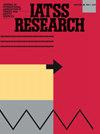Nudging drivers: The influence of innovative green-phase forewarning systems on drivers' start-up behavior at signalized intersections
IF 3.3
Q3 TRANSPORTATION
引用次数: 0
Abstract
Traffic congestion, especially at signalized intersections along urban arterials, poses a global challenge affecting travel efficiency, mental health, and air quality. This study investigates the effectiveness of innovative forewarning systems in reducing start-up lost time at signalized intersections. In this regard, four different forewarning systems were tested and compared with the untreated control condition in a driving simulator experiment inviting 61 participants with a valid driving license. All the tested conditions were tested for two different waiting times, i.e., 20 s and 60 s to evaluate their impact on reaction times, start-up lost time, and early start-up behaviors. The results of the study demonstrated that among the tested conditions, the clock-based VMS with a 2 s (VMS_2s) warning proved to be the most effective in significantly reducing start-up delays by 21.2 %. In addition, VMS_2s and R_yellow; the condition where the yellow signal was displayed simultaneously with the red signal during the last two seconds, effectively reduced drivers' reaction times at the onset of green signal by 53.5 % and 62.4 %, respectively. Moreover, the results did not reveal any instance of risky early start-up behaviors, such as red light running violations. Based on the study findings, the VMS_2s and R_yellow conditions are suggested for further evaluation and potential real-world implementation to improve drivers' start-up behavior at signalized intersections.
轻推驾驶员:创新绿相预警系统对信号交叉口驾驶员启动行为的影响
交通拥堵,尤其是城市主干道信号交叉口的交通拥堵,是影响出行效率、心理健康和空气质量的全球性挑战。本研究探讨了创新预警系统在减少信号交叉口启动时间损失方面的有效性。为此,在驾驶模拟器实验中,对四种不同的预警系统进行了测试,并与未处理的对照条件进行了比较,该实验邀请了61名持有有效驾照的参与者。所有测试条件分别在20秒和60秒两种不同的等待时间下进行测试,以评估其对反应时间、启动损失时间和早期启动行为的影响。研究结果表明,在测试条件中,具有2s (VMS_2s)警告的基于时钟的VMS被证明是最有效的,可显着减少21.2%的启动延迟。此外,VMS_2s和R_yellow;在最后2秒黄红灯同时显示的情况下,驾驶员在绿灯开始时的反应时间分别减少了53.5%和62.4%。此外,调查结果并没有揭示任何有风险的早期创业行为,比如闯红灯。基于研究结果,提出了VMS_2s和R_yellow条件的进一步评估和潜在的现实应用,以改善信号交叉口驾驶员的启动行为。
本文章由计算机程序翻译,如有差异,请以英文原文为准。
求助全文
约1分钟内获得全文
求助全文
来源期刊

IATSS Research
TRANSPORTATION-
CiteScore
6.40
自引率
6.20%
发文量
44
审稿时长
42 weeks
期刊介绍:
First published in 1977 as an international journal sponsored by the International Association of Traffic and Safety Sciences, IATSS Research has contributed to the dissemination of interdisciplinary wisdom on ideal mobility, particularly in Asia. IATSS Research is an international refereed journal providing a platform for the exchange of scientific findings on transportation and safety across a wide range of academic fields, with particular emphasis on the links between scientific findings and practice in society and cultural contexts. IATSS Research welcomes submission of original research articles and reviews that satisfy the following conditions: 1.Relevant to transportation and safety, and the multiple impacts of transportation systems on security, human health, and the environment. 2.Contains important policy and practical implications based on scientific evidence in the applicable academic field. In addition to welcoming general submissions, IATSS Research occasionally plans and publishes special feature sections and special issues composed of invited articles addressing specific topics.
 求助内容:
求助内容: 应助结果提醒方式:
应助结果提醒方式:


